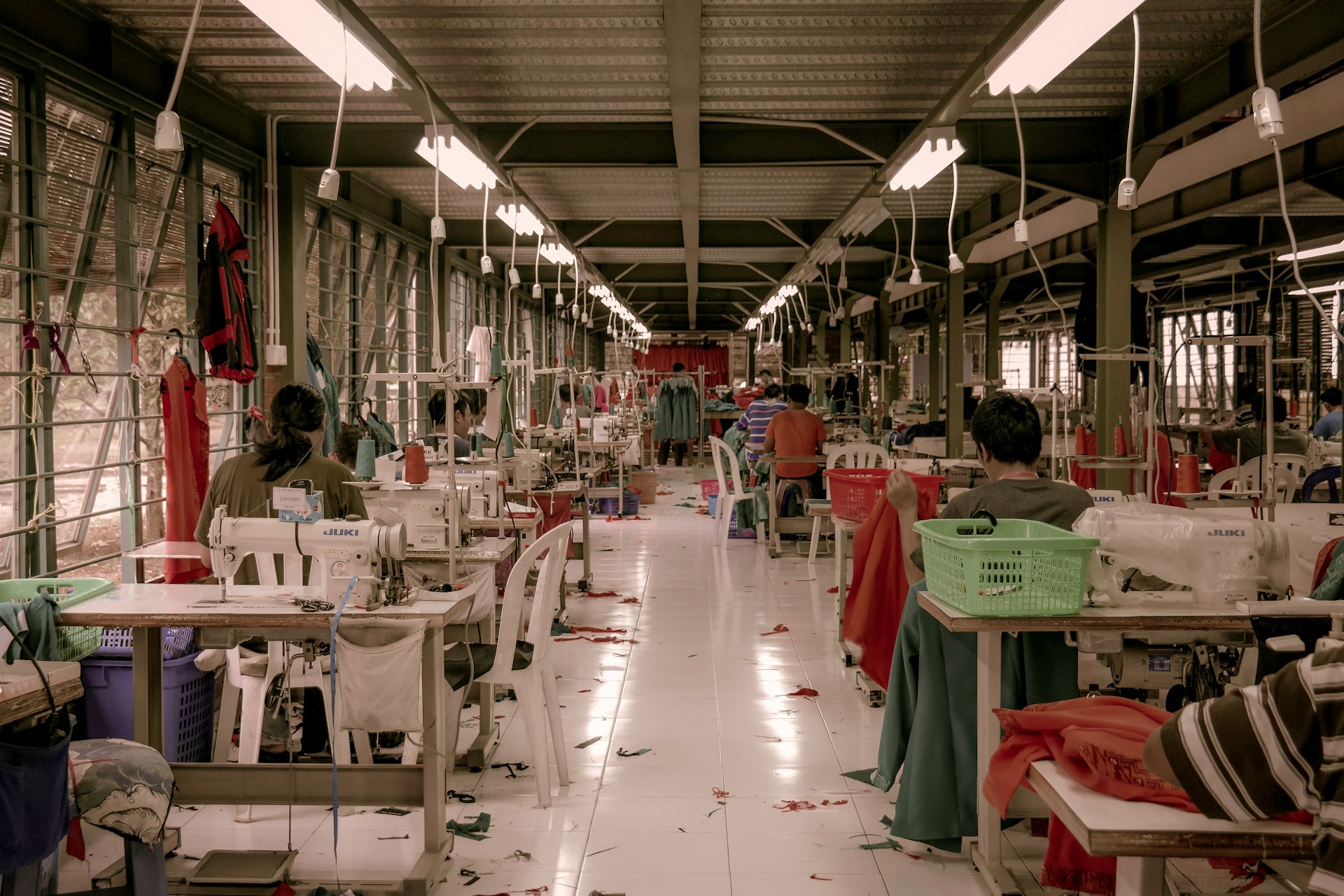How Can Circular Economy Principles Transform UK’s Textile Industry?

Good day, dear readers. Today we are going to dive into one of the most pressing issues that the textile industry is currently facing. The circular economy promises to be the solution that could radically transform this sector, particularly in the United Kingdom. As you continue reading, you will find a comprehensive exploration of how circular economy principles can revolutionize the UK’s textile industry, a sector plagued by the excessive waste and unsustainable practices.
Embracing the Circular Economy Model
In the context of the textile industry, the circular economy can be a game-changer. The concept, in a nutshell, revolves around the reduction of waste, the recycling of materials, and the continual use of resources. The circular model aims to create a closed-loop system where waste and resource exploitation are minimized.
Sujet a lire : What’s the Latest in Biometric Payment Technology for UK Retail?
By adopting a circular economy model, the textile industry can effectively reduce its environmental footprint. It opens opportunities for the reutilization of waste materials, breaking away from the traditional linear economy of "take, make, dispose". Instead of constantly sourcing new, raw materials, the industry can focus on reusing, repairing, and recycling existing textiles.
The transition towards a circular economy in this sector is not merely a notion; it is a necessity. The textile industry is the second-largest polluter in the world, according to data from Google and the European Environmental Agency. These alarming numbers calls for an urgent shift towards sustainable practices.
Cela peut vous intéresser : Save big on air tahiti nui business class with business class asap
The Role of Scholar Data and Research
Academia and research play a crucial role in promoting and implementing circular economy principles. Scholar data, gathered from various crossref sources, provides invaluable insights into the potential of this model in the textile industry.
Scholarly articles and studies highlight the potential benefits and challenges of this approach. Many suggest ways to effectively integrate circular economy principles into the textile industry, providing data-driven evidence and frameworks that can guide industry-wide changes. The researcher’s insights offer a more comprehensive understanding of the practicalities of implementing circular economy principles in a sector as complex and diversified as textiles.
Sustainability in Fashion and Clothing
The fashion and clothing sector is a sub-industry within textiles where the impact of a circular economy could be profound. It is a sector notorious for its environmental impact, with vast amounts of waste produced each year. The shift towards sustainable fashion is not just a trend; it is an imperative.
By implementing circular principles, the fashion industry can revolutionize its production processes. Instead of creating clothes that end up in landfill after their use, companies can design garments for longevity, reuse, and eventual recycling.
The shift towards sustainable fashion also opens up opportunities for innovation in materials. Research into sustainable textiles reveals potential for materials that are not only environmentally friendly, but also high-performing and aesthetically pleasing. Examples include fabric made from recycled plastic bottles or plant-based fibers.
The Role of Technology and Innovation
For the circular economy to take roots in the textile industry, significant technological advancements and innovation are necessary. Technologies such as recycling machines, digital platforms for sharing and reusing clothes, and innovative materials are all vital components of a circular textile industry.
In the age of digitalization, data from companies such as Google can provide insightful analysis of consumer behavior, helping the industry to understand the demand for sustainable fashion and adjust their strategies accordingly. Innovation in recycling technologies, on the other hand, can help the industry to convert textile waste into reusable materials, reducing the need for new, virgin textiles.
The European Perspective and EMF’s Role
The UK’s textile industry can draw inspiration from other European countries where the shift towards a circular economy is already underway. The Ellen MacArthur Foundation (EMF), a European initiative, is a leading advocate for the circular economy. EMF’s reports and guidelines provide a valuable roadmap for the UK’s textile industry.
Through their extensive research and advocacy, EMF has demonstrated the viability of the circular economy. Their case studies provide tangible examples of successful implementation of circular economy principles in various sectors, including textiles. For the UK’s textile industry, the insights from these European examples can serve as both inspiration and guidance for their transition towards a more sustainable model.
As we move forward into a new era of environmental consciousness and sustainability, the circular economy offers a promising solution for the transformation of the textile industry. It is a journey that will require collaboration, innovation, and a significant shift in mindset. But the rewards, both for the industry and for our planet, are well worth the effort.
Reimagining Business Models within the Textile Industry
For the circular economy to take a firm foothold within the textile industry, businesses must rethink their traditional models. Adopting a mindset shift from linear to circular is not just a matter of environmental responsibility; it can also offer competitive advantages and foster customer loyalty.
In a linear business model, production follows the ‘take-make-dispose’ cycle. It relies heavily on constant input of raw materials and results in massive amounts of textile waste. On the contrary, a circular business model focuses on creating systems that are restorative and regenerative by design, aiming to keep products and materials in use for as long as possible.
Companies like Patagonia and H&M are already trailblazers in this field, integrating the tenets of a circular economy into their business models. Patagonia, for instance, has a repair and reuse program that encourages customers to return their worn-out clothes for repair or recycling. Similarly, H&M’s garment collecting initiative allows customers to drop off unwanted clothes at their stores, regardless of their brand or condition.
Technology can provide valuable support in facilitating these new business models. Digital platforms can enable sharing, swapping, and selling of used clothes, thus extending their life cycle. Technologies for textile recycling can turn old garments into new ones, minimizing the need for virgin textiles.
The Ellen MacArthur Foundation (EMF), a prominent advocate for circular economy, provides resources and guidelines to help businesses transition to circular models. Their case studies and reports can offer valuable insights for the textile sector in the UK and beyond.
Conclusion: The Future of the Textile Industry
The journey of the textile industry towards a circular economy is certainly challenging but also undeniably necessary. The potential benefits, both for the environment and the industry itself, are substantial. Reduced reliance on virgin resources, minimized waste, significant cost savings, and enhanced brand reputation are just a few of the many advantages that the circular economy can bring.
However, the transition requires a collaborative effort. All stakeholders, from businesses and consumers to policymakers and scholars, must come together to facilitate this shift. Academic research, such as those found on Google Scholar and crossref, can offer valuable insights and guidance. Policies promoting waste reduction and recycling, and incentivizing sustainable practices can also pave the way.
The shift towards a circular economy in the textile industry is in line with the global momentum towards sustainability. As we face the growing environmental crisis, adopting circular economy principles isn’t just a business strategy—it’s a survival strategy—for the textile industry.
In conclusion, the future of the UK’s textile industry lies in harnessing the power of the circular economy. It’s not only about transforming production processes or adopting new business models—it’s about reshaping the very core of the industry. And with the support of initiatives like the Ellen MacArthur Foundation, technological innovations, and growing public consciousness, this transformation is well within reach.
